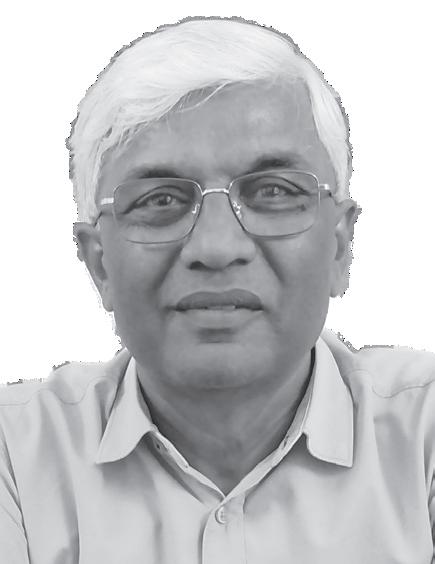
7 minute read
Q+A
IN THIS ISSUE: SURESH PATEL
Director Sidwin Fabrics, India
Sidwin Fabrics has also launched a B2C crop protection brand, Grow Cover, which sells three products under this brand. We spoke with the company’s
Director, Suresh Patel, to gain an understanding of the dynamics of nonwovens use in India.
International Fiber Journal: Could you please share a brief history of your company?
Suresh Patel: Sidwin Fabrics was founded in 2012 and began its journey by manufacturing carry bags using nonwoven fabrics. After achieving success, we decided to venture into spunbond nonwoven fabrics production, a move made at a time when the technology was still in its infancy in India. We recognized significant potential and growth opportunities in this sector and conducted extensive research, including surveys and visits to various countries, to evaluate multiple nonwoven technologies.
We invested in a 3.2-meter-wide doublebeam nonwoven production line with a monthly capacity of 450 tons. The market response was overwhelmingly positive, so in 2019, we commissioned a second production line, a 2.6-meter-wide doublebeam hygiene application. Even amid challenges posed by the COVID-19 pandemic, we swiftly adapted to the surge in demand for medical textiles, including PPE kits and face masks.
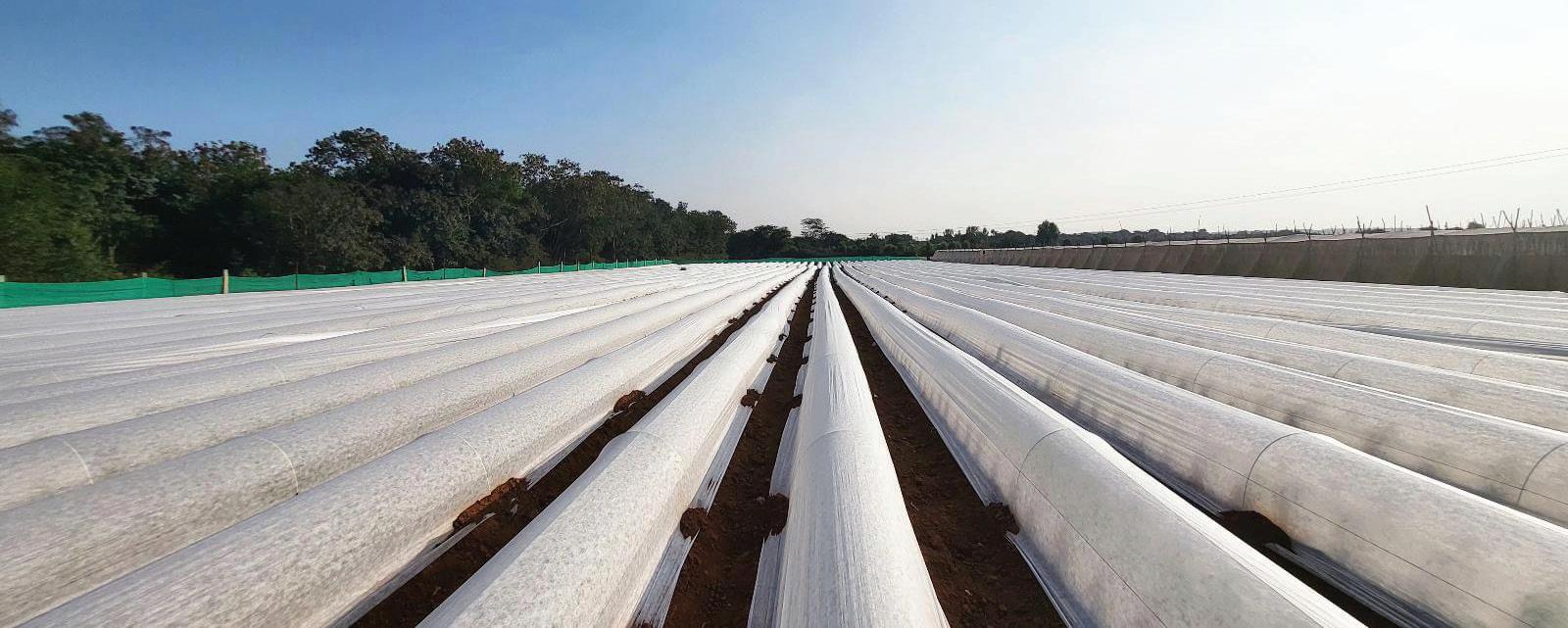
In 2021, we expanded further by installing a third SSMS production line with a width of 1.6 meters, mainly to manufacture nonwoven hygiene fabrics and medical fabrics. With the addition of this third line, our manufacturing capacity increased to 1,000 tons per month. Alongside this, we were also converting nonwoven fabrics into consumer bags and continued to add new converted products over the years.
IFJ: Which are the various types of nonwoven fabrics that you produce, and what are their applications?
Patel: We produce nonwoven fabrics ranging from 8 GSM to 240 GSM, which are used in various applications, including consumer and packaging bags, agriculture, medical, and hygiene segments. We also supply value-added nonwoven fabrics for various applications, including anti-static fabrics, fire-retardant fabrics, anti-odor fabrics, and fabrics with hydrophobic properties. We have a very active R&D department, which allows us to customize fabrics according to our customers’ demands. We also collaborate with various Textile Excellence Centers, which have facilitated the design and development of tailored products. We also test our new innovations at the testing laboratories of these centers.
IFJ: Please share more about your journey into nonwoven fabrics used in agriculture applications.
Patel: We hail from a farming community, so after Sidwin forayed into nonwoven fabrics, we explored the opportunity of using nonwoven fabrics for crop protection. We conducted research and trials in 2013, and Sidwin may be the first Indian company to venture into crop protection fabrics.
We went and met farmers directly in villages, educating them through trials conducted in a small patch of land on their farms. Due to this, farmers could discern the difference in yields and quality between crops protected with nonwoven fabrics and those exposed to weather elements and pests.


Every state in India has established a Krishi Vikas Kendra (KVK), also known as Agriculture Development Centers, in each district of the state. These KVKs guide the farmers to grow their agricultural crops scientifically. We conducted trials at the farms of these KVK’s in various Indian states on vegetable and fruit crops. A few KVK’s also give live demonstrations in their farms to make farmers understand the difference between crops with protective covers and those which are not protected.
IFJ: What is the difference in the yield and quality of agricultural crops protected with nonwoven fabrics?
Patel: The nonwoven fabric cover effectively shields the crops from the effects of climate change, insects, pests, and animals, birds, ensuring enhanced agricultural productivity. When various fruit plants, such as banana and papaya, are in their infancy, they are most prone to being affected to the extent of 20% due to intense heat and pests. When these plants are covered with nonwoven fabrics, the yield of these crops increases, and farmers are now able to harvest around 99% of the crop, as opposed to 80% earlier.
The quality of these fruits is also enhanced, and farmers can receive a better price due to the benefits that the crop provides. Combining all these factors, farmer incomes, too, have increased by an average 20 to 25%. These fabrics are a low-cost alternative for greenhouses and can be afforded by farmers, even those with smaller land holdings.
IFJ: What growth has been witnessed in usage of nonwoven fabrics for crop protection ever since your company forayed into these fabrics?
Patel: Once the field trials at the KVKs were successful, various Indian state governments started giving subsidies to farmers for using nonwoven fabrics in crop protection, which provided a boost in the consumption of these fabrics. Farmers across India have also come to understand the importance of crop covers, leading to increased acceptance.
Word-of-mouth publicity has played a bigger role in increasing acceptance. Secondly, farmers with large landholdings are more likely to adopt scientific farming methods. Agronomists have also proven to be valuable, as they provide comparative analysis to farmers. The use of nonwoven fabrics for protecting agricultural crops continues to increase with each passing year. According to our understanding, the acceptance of crop protection fabrics has now reached 20-25% of agricultural land in India. However, in some states, the use may have even reached up to 30%.
We have also launched a B2C brand under the name of Grow Cover. Under the brand, we have three products. One is a Crop Cover, which is like a tunnel and protects a row of plants across the field. The second one, called a Bunch Cover, is for covering a bunch of bananas, papayas, or pomegranates, and is mandatory for fruits meant for exporting. The third are the covers for plants that are in their infancy, as they are more prone to climate change. These covers are typically disposable after a single use. However, some farmers use these fabrics appropriately and reuse them for even two crops.
IFJ: Any planned capacity expansion or new investments shortly?
Patel: We are planning to expand and install a new nonwovens production line later this year. There is a limitation on width when producing nonwoven fabrics. In our case, it is 3.2 meters, but some applications need fabrics with a wider width. We are now planning to purchase a machine that will bond fabrics, allowing for a wider width of fabric that can range up to 32 meters. This wider option will help cover a larger area of the farm, and the main market for these wider fabrics is expected to be Europe and the U.S., as farmers own large landholdings in these regions.
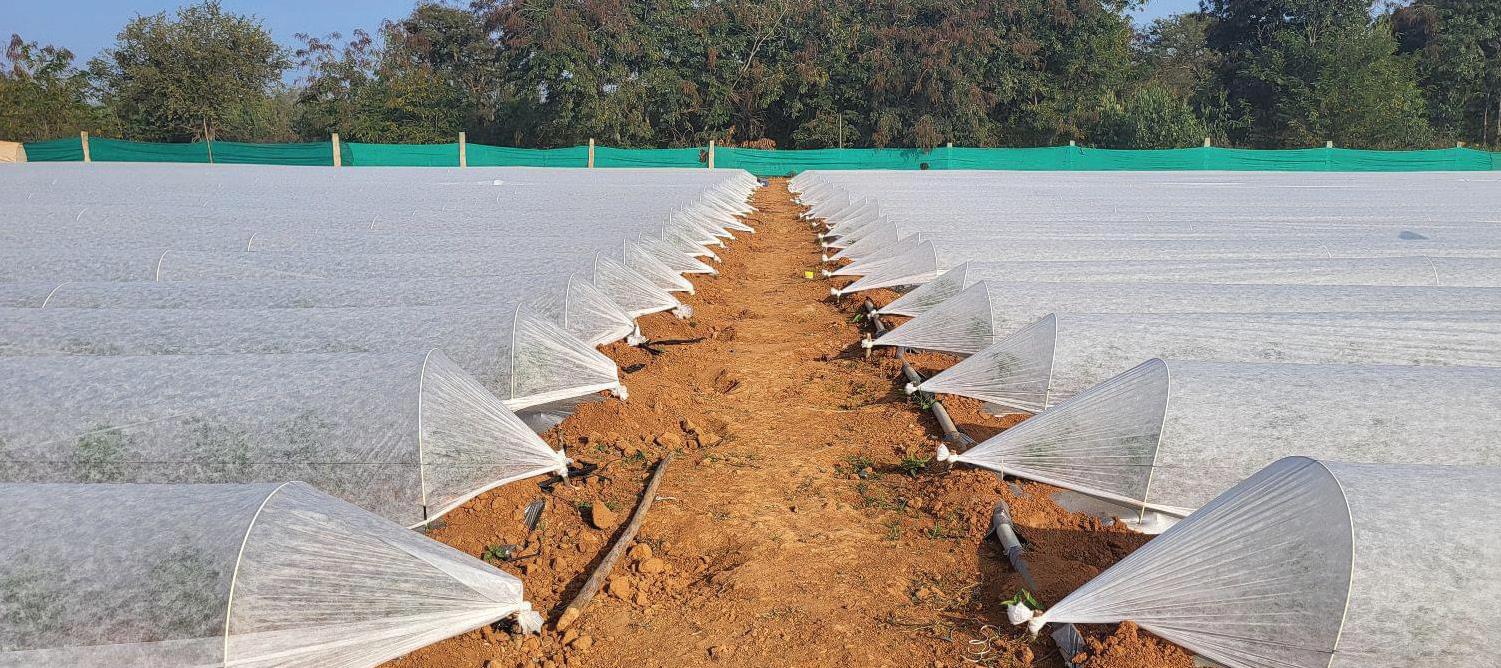
We are currently outsourcing the conversion of our fabrics into various products, including shopping bags, PPE kits, surgical gowns, pillow covers, bed sheets, and crop protection covers. We now have plans to start our stitching unit by installing 50 sewing machines. Currently, the percentage of converted products is 10% of our fabric production, and we will increase this percentage by diversifying into other products.
IFJ: What is the advantage of the products that you offer vis-à-vis those offered by the competition?
Patel: We work on the concept of ethics by not compromising on the quality of fabrics and quoting a competitive price. We also provide prompt deliveries. We treat both small and large buyers equally, because we believe that a small buyer may become a large buyer in the near future. We also customize products for buyers, which has helped us gain increased loyalty among buyers, fueling company growth. Our existing customers are also now recommending our products to other buyers.
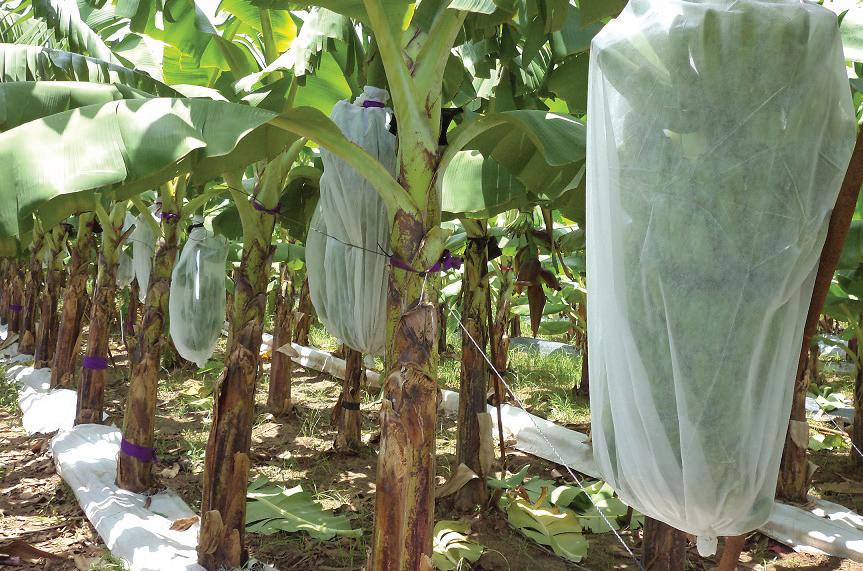
We are also very transparent concerning product pricing. The price of polymers changes on a weekly basis. When the price of polymer is reduced, we reduce the price of the fabrics, even for pending orders. This has induced a trust factor amongst our customers.
IFJ: Please share details of your presence in the Indian and export markets.
Patel: Direct exports account for 30% of our revenue. Indirect exports account for 20%. Sales in the domestic market account for the rest. We have mainly benefited from the China+1 policy, as foreign buyers have diverted their sourcing to India. India has proved to be a dependable and trusted alternative sourcing destination for nonwoven fabrics.
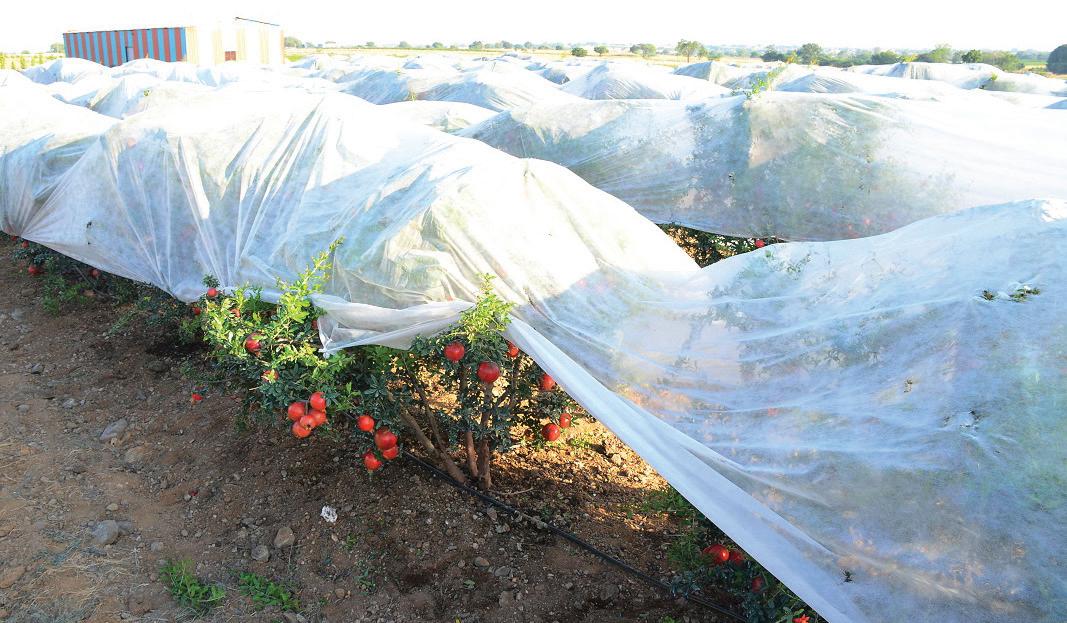
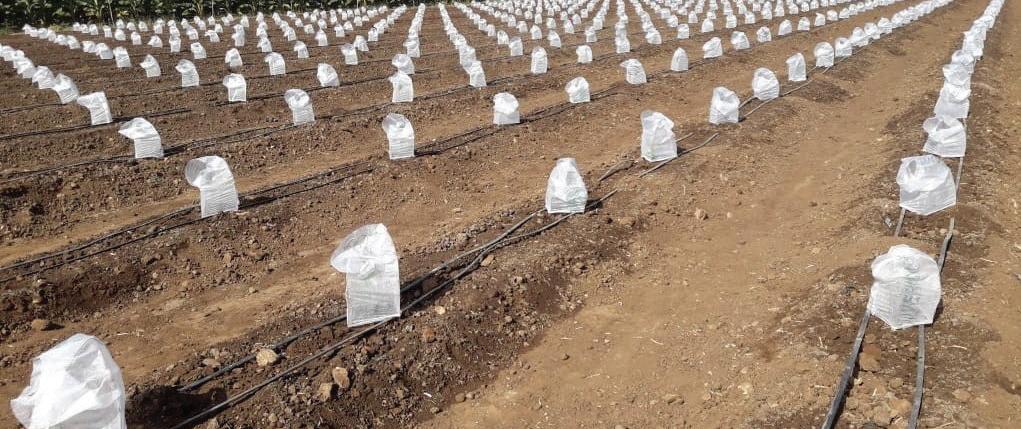
IFJ: How important is the sustainability factor for your company? What sustainable products or solutions do you offer to your customers?
Patel: We have secured the Oeko-Tex 100 certification, which we obtained five years ago, making us one of only a few Indian nonwoven fabric producers to hold this certificate. These Oeko-Tex certified fabrics are produced on demand, mainly from European countries and produced using compliant additives and inputs. We are also planning to apply for a Global Recycled Standard (GRS) Certificate, as it has become mandatory when exporting to European countries. We have already started converting the waste from the nonwoven fabrics into granules, which is reused as raw material. Sidwin Fabrics also produces Oxobiodegradable fabrics that offer partial biodegradability. We are also committed to renewable energy. We source 70% of our electricity requirement from solar and wind power.
IFJ: What are the key trends in consumer demand and the growth trajectory of the Indian nonwovens industry?
Patel: Applications in consumer shopping and packing bags are expanding tremendously, with India imposing a ban on using plastic bags with a thickness below 60 GSM. Alongside, innovative stitching and printing technology for bags is also being introduced. Since the start of the COVID-19 pandemic, nonwoven materials in the medical segment have also increased, with doctors now opting for PPE kits in lieu of the traditional textile gowns.
With rising per capita incomes and increasing awareness, applications in the hygiene industry, too, has taken off in India as nonwovens make up 90% of a hygiene product. This remarkable increase in demand for hygiene products has led to a surge in demand for nonwoven fabrics. Nonwoven fabrics have also found several new applications in the industrial segment, which too has increased demand.
In 2013, nonwoven fabrics production in India was around 45,000 tons. In 2025, it is now at around 125,000 tons. There was overcapacity post-COVID-19 pandemic, but it has now reached a saturation level. New production capacities are also being set up, particularly by those involved in exports.
Fi-Tech Team connects you to the most technologically advanced suppliers serving the Polymer, Synthetic Fiber, Nonwoven and Textile Industries.

Arun Rao started his career in the textile industry and has worked across the segments of spinning and weaving production. He forayed into the sales function, beginning with selling branded innerwear and graduated to selling clothing of well-known brands. He then joined Fibre2fashion, a B2B textile website, as News Editor for seven years. Recently, he launched Taurus Communications, a PR & advertising agency focused on the textile industry value chain. With a love for journalism, he freelances for renowned textile magazines, along with managing the agency. He is the India foreign correspondent to the IFJ customers trust
By May 31st this year, Blue Origin had taken 64 people into space on its New Shephard reusable, suborbital rocket, including the attention-grabbing all-female crew of U.S. celebrities in designer neoprene in April. No EMUs were needed.
These suits were designed by Monse’s co-founders, Fernando Garcia and Laura Kim, in collaboration with Lauren Sanchez.











